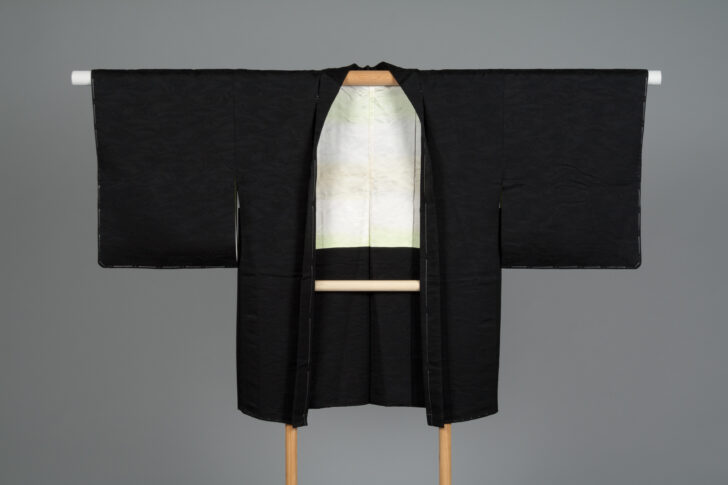Haori
Japanese

Description
Subject Matter:
The Haori is a traditional Japanese hip or thigh-length jacket with elongated sleeves that is worn over the kimono. The Haori typically includes an interior lining with a design that is otherwise hidden from view when worn.The haori was originally part of a man’s formal attire, but in the nineteenth century, female entertainers in Edo (modern Tokyo) adopted it as a cloak for outdoor wear in mild weather. By the end of the century, married women of the upper class adopted black crepe silk haori with family crests for formal, public occasions. For much of the twentieth century, the haori has been the standard outerwear for a woman who dresses in a kimono outside the home.
This haori contains one kamon (family crest); The number of kamon (family crests) determines the formality of the dress. Garments with itsutsu-mon (five family crests) are the most formal. Garments with mitsumon (three family crests) and hitotsumon (one family crest) are semi-formal.
Physical Description:
formal black funerary (mofuku) haori with interwoven wave motifs with one kamon (family crest) with an off-white and pale green silk lining with interwoven stylized crane motifs.
Usage Rights:
If you are interested in using an image for a publication, please visit https://umma.umich.edu/request-image/ for more information and to fill out the online Image Rights and Reproductions Request Form.